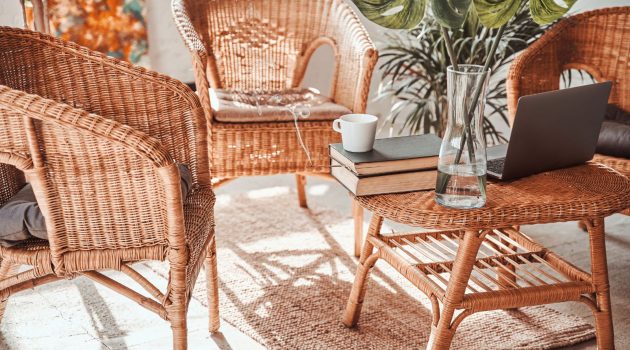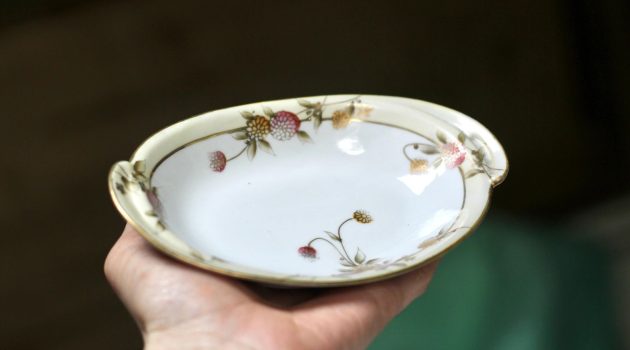Choosing furniture for a new family apartment can be both fun and challenging. You’re setting up a space where you and your family will create lasting memories. It’s important to mix comfort with style while considering everyone’s needs.
Ensuring that your choices are practical and cozy makes the apartment a pleasant place for everyone. Your goal is to create a home that feels welcoming and reflects your family’s personality.
By making thoughtful decisions, you can transform your new apartment into a perfect haven for your loved ones.
1. Measure Your Space

Before purchasing any furniture, you need to measure your space. Start with measuring the length, width, and height of each room. Use a tape measure to get accurate numbers. Write down these measurements so you can refer to them when shopping.
Don’t forget to measure doorways, hallways, and staircases. This ensures that your new furniture can fit through these areas without any issues. Pay attention to architectural features like windows and built-in items.
Knowing the exact layout helps you avoid buying furniture that’s too big or awkwardly shaped.
Using this information will help you make better decisions and create a comfortable, well-furnished apartment.
2. Set a Budget
Setting a budget is the first step to furnishing your new apartment. It helps you manage your expenses and keeps you from overspending. Think about how much money you can afford to spend overall. This includes not just furniture, but also any decor items.
Next, prioritize what you need most. A bed and a sofa, for example, might be high on your list. Consider allocating a larger part of your budget to these essential items.
You can always buy smaller items later. Look for budget-friendly options. Check out sales, second-hand stores, or even free items from family and friends.
Being creative can save a lot of money.
3. Prioritize Essential Pieces

When setting up your new family apartment, start with the essentials.
Begin with a comfortable bed. Since you’ll spend about a third of your time sleeping, invest in one both you and your partner find comfortable.
Next, focus on seating. A good sofa is crucial for your living room. It’s where you’ll relax, entertain guests, and spend time together.
In the kitchen, you’ll need a table and chairs. Choose ones that fit your space and your style. A small dining set can be perfect for cozy meals.
Don’t overlook storage. Consider pieces like dressers, bookshelves, and cabinets. These help keep your space organized.
For the bathroom, basics like a shower curtain, bath mat, and some storage for toiletries are essential.
Once these essentials are covered, you can look into adding decor and other less critical items to make your new apartment feel like home.
4. Choose a Style

Picking a style for your apartment’s furniture is fun and important. It sets the mood and reflects your personality. Start by looking at what styles you like, such as modern, traditional, rustic, or eclectic.
Think about the colors and materials that will go well with your chosen style. Coordinating colors can make your space feel unified and stylish.
Don’t forget to consider the room’s layout. Some styles need more open space, while others fit better in cozier settings. Keep this in mind when making your choices.
Mixing different styles can also look great if done carefully. A blend of modern and vintage pieces can give your apartment a unique charm.
No matter which style you choose, make sure it feels right for your family and creates a welcoming atmosphere in your new apartment.
5. Opt for Multi-Functional Furniture
Multi-functional furniture is perfect for a new family apartment. These pieces save space and add versatility to your home. For example, a wall-mounted drop-leaf table can be used for dining or working. When not in use, you can fold it down to free up floor space.
Sofa beds are another great option. They function as comfortable seating during the day and can be transformed into a bed at night. This is ideal for hosting guests without needing an extra room.
Storage ottomans offer both seating and storage. You can use them to store toys, blankets, or other items, keeping your apartment tidy. Their dual purpose means you get more use out of the same piece of furniture.
Look for furniture that serves multiple purposes. A coffee table with built-in storage or shelves can hold books, magazines, or remote controls. This helps keep your living room organized and clutter-free.
In kids’ rooms, consider bunk beds with storage drawers or desks underneath. These solutions maximize space and provide extra functionality in small areas. Multi-functional furniture makes your home more efficient and enjoyable.
6. Test for Comfort
When picking out furniture for your family apartment, you need to make sure it’s comfortable.
Start by sitting down on the chairs and sofas. Lean back and relax for a moment. Does it support your back well? Are the cushions soft yet firm enough? It’s important to feel good when using the furniture.
Next, check the size. Make sure the dimensions work for your body. Your feet should touch the ground, and your back should feel supported.
If possible, lie down on the sofa. This is especially nice to do if you love naps. Test how the mattress of a bed feels too.
Remember, comfort is about how you feel using the furniture. It might look great, but if it’s not comfortable, you won’t enjoy it. Make your home a cozy, inviting space for everyone.
7. Consider Storage Needs

Storage is essential in a family apartment. Look for furniture that offers extra storage. For example, beds with drawers underneath can provide space for clothes and toys.
Think about multi-purpose furniture. Storage ottomans, side tables with shelves, and storage benches can help keep your space tidy.
Don’t forget the entryway. Consider adding a hall tree or a storage bench to keep coats, shoes, and bags organized.
In the living room, opt for coffee tables with hidden compartments or bookshelves. These pieces ensure a clutter-free environment while providing spots for books, games, and more.
For kids’ rooms, choose furniture that grows with them. Dressers, toy storage units, and desks with built-in shelves can help manage their ever-changing needs.
Lastly, kitchen and dining areas can benefit from storage solutions like sideboards or hutches. These can hide away dishes, table linens, and more, keeping countertops clear and making meal prep easier.
8. Think Long-Term
When choosing furniture for your new family apartment, think about the future. Consider pieces that will last. Look for quality materials and solid construction. This way, you won’t have to replace items frequently.
Pick classic styles. Trends come and go, but timeless designs will always look good. This helps your home stay stylish over the years. Consider how your needs might change. If you plan to have kids or pets, choose furniture that can withstand the wear and tear.
Think about maintenance. Some materials require more care than others. Leather and wood need special cleaners to stay in good condition. Look for multi-purpose furniture. Pieces like storage ottomans or convertible sofas can be really helpful in a growing household.
Prioritize comfort and function. Make sure every piece of furniture not only looks good but also meets your daily needs.
9. Use Light Colors for Small Spaces
Light colors can make a small room feel bigger. They reflect more light, making the space feel airy and open. Whites, pastels, and light grays are great choices. You don’t have to stick to just white; soft shades can add a touch of color without overpowering the room.
Stick with a cohesive color palette. Using too many colors can make a small space feel cluttered. Choose a few light colors that work well together and use them throughout the room. This will make your space look more organized and calm.
Maximize natural light. Light colors help bounce the natural light around the room, enhancing the effect of larger space. Keep windows uncovered or use light, sheer curtains to let in as much light as possible.
When choosing furniture, pick pieces in light shades. Light-colored furniture blends well with the walls, creating a seamless look. This way, no single piece stands out too much, and the room feels more expansive.
Think about your accessories too. Rugs, pillows, and other decorative items should also follow your light color scheme. Lighter accessories help tie the room together and keep the space feeling bright and open.
10. Check Durability
When choosing furniture for your family apartment, durability is key. You’ll want pieces that can withstand daily use, especially if you have kids or pets.
Start by researching the materials. Solid wood frames are often more durable than particleboard or plastic. Look for sturdy construction methods, such as reinforced joints or metal brackets.
Pay attention to the upholstery. Fabric should be thick and tightly woven. Leather can also be a durable option, but it might require more maintenance.
Test the furniture in person if you can. Sit on chairs, lean back on sofas, and wiggle tables to see if they feel solid. Pieces that wobble or creak might not last long.
Ask about the warranty. Good durable furniture usually comes with a longer warranty. This can give you peace of mind knowing the manufacturer stands by their product.
Reading reviews can also help. Other buyers’ experiences can provide insight into how well the furniture holds up over time.
11. Invest in a Quality Sofa

A good sofa is the centerpiece of your living room. It’s where you’ll spend time relaxing, watching TV, or chatting with family and friends. So, you want one that’s comfortable and durable.
Before buying, think about your budget. Sofas come in many price ranges. A standard three-seater sofa can cost between $800 and $3,000. It’s important to get the best quality you can afford.
Make sure to measure your space. Measure doorways, hallways, and the spot where the sofa will go. This helps avoid problems when moving it into your new home.
Consider the sofa’s construction. Check the frame, cushions, and fabric. A strong frame, comfy cushions, and durable fabric mean your sofa will last longer.
Choose a style you love. Sofas come in many designs. Pick one that fits your taste and matches the rest of your decor. If you want customization, be ready to spend a bit more.
Look at the suspension system. Good suspension, like coils or webbing, adds to the comfort and quality of the sofa. This ensures that your sofa stays comfy for years.
Finally, think about the maintenance. Some fabrics are easier to clean than others. If you have kids or pets, go for stain-resistant materials.
Investing in a good sofa makes your living room welcoming and comfortable.
12. Buy a Sturdy Bed Frame
Choosing a bed frame is crucial for your new apartment. You want something that will last and provide good support.
Look for bed frames made from high-quality materials like solid wood or steel. These materials ensure the frame is strong and durable. Avoid flimsy materials that can break or wear out quickly.
Check the bed frame’s weight capacity. It should be able to support both your mattress and anyone sleeping on it. This is particularly important if you plan to get a larger mattress like a queen or king size.
Consider the height of the bed frame. Some people like their bed higher off the ground, which can make it easier to get in and out of bed. Others prefer a lower bed for a more modern look.
For active couples, a sturdy frame is even more important. Look for features like reinforced legs and center support bars. These add stability and help prevent the bed from moving or making noise.
Think about the style of your frame. It should match the look of your bedroom. If you have a modern room, a sleek, simple design works well. For a more traditional room, consider a wooden frame with detailed craftsmanship.
A good bed frame is an investment in your comfort and quality of sleep. Take your time to choose the right one for your needs.
13. Select Easy-to-Clean Fabrics
When choosing furniture for your new family apartment, pay attention to the fabric of your sofa and chairs. Look for materials that are easy to clean and resist stains. This can save you a lot of hassle in the long run.
Polyester, microfiber, and acrylic are great options. These fabrics are durable and can withstand daily wear and tear. They are also simple to clean, often requiring just a quick wipe with a damp cloth.
Synthetic fabrics like nylon and olefin are also worth considering. They are known for their durability and stain resistance. Plus, they often come in a variety of colors and patterns, so you can still get that stylish look you want.
Avoid fabrics that are prone to fading, especially if your furniture will be in direct sunlight. Dark, natural fabrics can lose their color over time when exposed to sunlight regularly. Instead, go for fade-resistant options or lighter shades.
Choosing easy-to-clean fabrics helps maintain the beauty of your furniture and makes your life easier. With kids and pets, spills and stains are bound to happen. So, it’s wise to pick materials that can handle these everyday challenges without extra stress.



